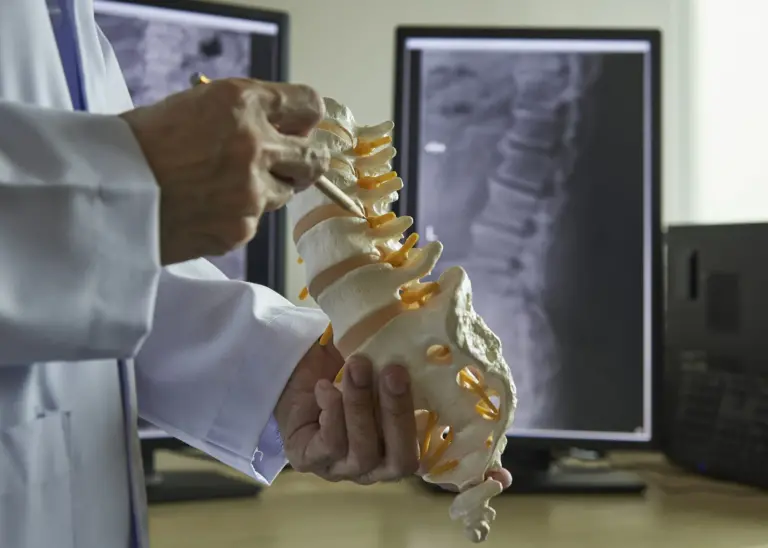Chiropractic Acupuncture Massage Therapy Physiotherapy DIRECT BILLING CALL NOW 306-954-4242 Orthotics Compression Stockings Orthopedic Bracing Chiropractic Acupuncture Massage Therapy Physiotherapy DIRECT BILLING CALL NOW 306-954-4242 Orthotics Compression Stockings Orthopedic Bracing
Chiropractic Acupuncture Massage Therapy Physiotherapy DIRECT BILLING CALL NOW 306-954-4242 Orthotics Compression Stockings Orthopedic Bracing Chiropractic Acupuncture Massage Therapy Physiotherapy DIRECT BILLING CALL NOW 306-954-4242 Orthotics Compression Stockings Orthopedic Bracing
How Chiropractors Use X-rays of the Spine for Precise Adjustments

Do I Need An X-ray Of My Spine?
When it comes to chiropractic care, many people envision a chiropractor adjusting their spine with skillful hands to relieve pain or discomfort. However, what often goes unnoticed is the crucial role that X-rays play in helping chiropractors deliver effective, personalized care. X-rays provide chiropractors with a clearer view of your spinal health, allowing for more precise and informed adjustments. In this post, we’ll dive into how chiropractors use X-rays of the spine to enhance treatment and ensure long-term health benefits.
X-rays Show Misalignment And Specifically Where Adjustments Are Needed
Why Do Chiropractors Use X-rays?
It’s important to make the distinction between how medical doctors use x-rays and how chiropractors use x-rays. Medical doctors when they send for an x-ray are looking for completely different things. Medical doctors look for things like bone fractures or dislocations, they also look for many different signs of cancer and there are many different signs that can show up on an x-ray. However, once these big scary things are not on the x-ray, they say “you’re fine” which does the patient a disservice and leaves them feeling like they were not listened to and not cared for.
Chiropractors on the other hand are trained to view more subtle problems in the spine with x-rays. Chiropractors are looking at misalignment in the spine or pelvis, they are looking at the curve of the spine to see if there is any degree of scoliosis present that could cause the problem for the patient. They are also looking for the signs of health in the spine, if there is arthritis present, known as degenerative disc disease and if the discs of the spine are healthy.
While not every chiropractic patient requires an X-ray, they are frequently used for a variety of reasons. The spine is a complex structure, and understanding its condition is essential for accurate treatment. Chiropractors use X-rays to:
Assess Structural Alignment: Misalignments in the spine, known as subluxations, are the primary focus of chiropractic care. X-rays help chiropractors identify these misalignments, which may not always be apparent during a physical exam. Having a detailed view of your spine helps chiropractors adjust specific areas that are out of alignment.
Diagnose Underlying Conditions: Sometimes, back pain is caused by issues like herniated discs, bone spurs, or spinal degeneration. X-rays allow chiropractors to rule out or confirm the presence of these underlying issues, ensuring that the proper treatment approach is taken.
Monitor Progress: Chiropractic adjustments often take place over several sessions. By using X-rays, chiropractors can track the progress of spinal corrections. This visual evidence of improvement helps in adjusting the treatment plan if necessary.
Prevent Further Injury: In some cases, spinal conditions can make certain adjustments unsafe or ineffective. X-rays reveal abnormalities, fractures, or conditions like osteoporosis that might be invisible to the naked eye. This allows chiropractors to modify their approach to avoid any potential harm.
What Can X-rays Reveal About Your Spine?
X-rays of the spine provide a wealth of information that influences chiropractic care. Here are some of the key elements chiropractors look for:
Subluxations (Misalignments): These are minor dislocations in the vertebrae, which can impact nerve function and contribute to pain and discomfort. X-rays allow chiropractors to identify where these subluxations are located.
Curvature of the Spine: An X-ray can reveal conditions like scoliosis (sideways curvature) or hyperlordosis/hyperkyphosis (excessive inward/outward curvature). Adjustments can then be tailored to correct or manage these abnormal curvatures.
Degeneration or Arthritis: Over time, spinal discs and joints can degenerate, leading to pain and limited mobility. X-rays allow chiropractors to determine the extent of degeneration, which informs the best treatment strategy.
Fractures and Bone Damage: An X-ray can show whether there are fractures or signs of bone damage that might make certain adjustments unsafe.
How X-rays Guide Chiropractic Adjustments
With the information from an X-ray, chiropractors can take a more targeted approach to adjustments. Instead of a generalized treatment plan, they can focus on the exact areas that need correction. For example:
Precision in Adjustments: Chiropractors can adjust specific vertebrae based on the X-ray findings, allowing for more effective relief of pain and restoration of movement.
Posture Correction: An X-ray helps chiropractors understand how poor posture may be affecting your spine. This can lead to adjustments that not only relieve pain but also improve your overall posture.
Preventing Complications: If the X-ray shows signs of a condition that makes spinal adjustments risky, such as osteoporosis or severe disc degeneration, the chiropractor can modify or avoid certain techniques to prevent injury.
What to Expect During the X-ray Process
If your chiropractor determines that an X-ray is necessary, the process is simple and non-invasive. Here’s what you can expect:
Initial Assessment: Before recommending an X-ray, the chiropractor will perform a physical exam and review your medical history to determine if imaging is needed.
X-ray Session: The X-ray is taken in the chiropractor’s office or at a nearby imaging center. You will be asked to stand or lie down in different positions to capture various angles of your spine.
Review: After the X-ray is processed, the chiropractor will review the images and explain their findings to you. This information will guide your personalized care plan.
Final Thoughts
X-rays are a powerful tool in chiropractic care, providing a window into the spine’s condition that allows for more precise, effective, and safe adjustments. By using X-rays, chiropractors can take the guesswork out of treatment, offering patients a targeted, personalized approach to pain relief and long-term spinal health.
If you’re considering chiropractic care and wondering if an X-ray will be part of your treatment plan, consult with your chiropractor. They will determine whether an X-ray is necessary based on your symptoms and overall health goals.
At Axis Health Center, we use X-rays to ensure that every patient receives the highest level of care tailored to their unique spinal health needs. Ready to learn more? Contact us today to schedule an appointment and begin your journey to a healthier spine!

